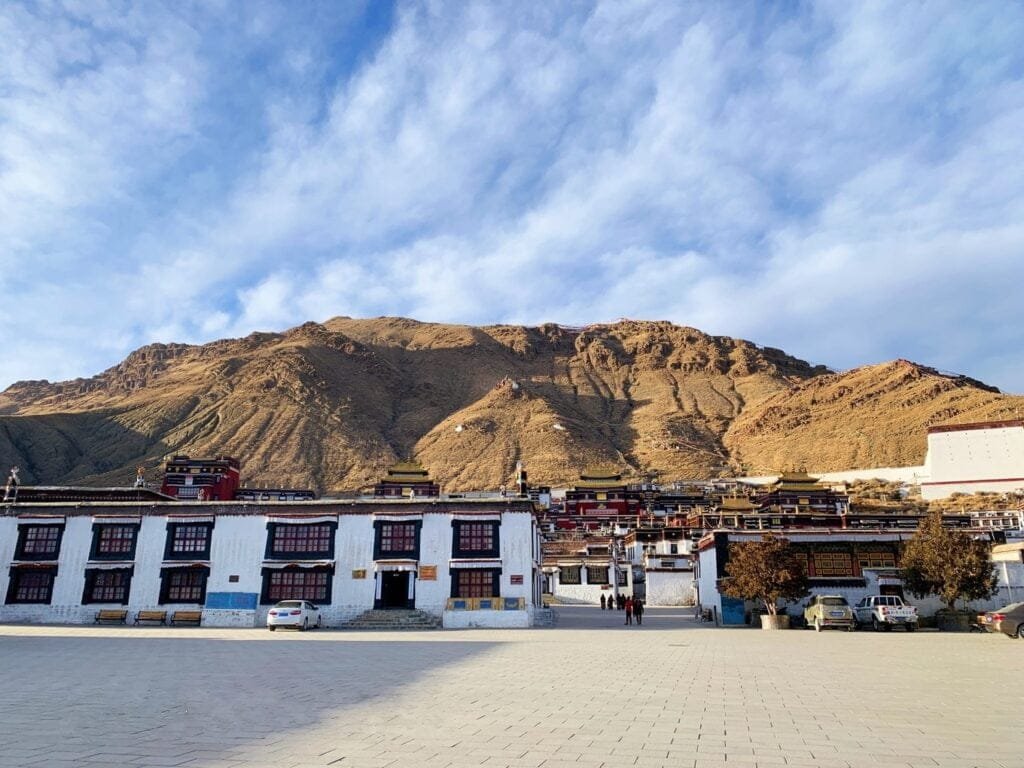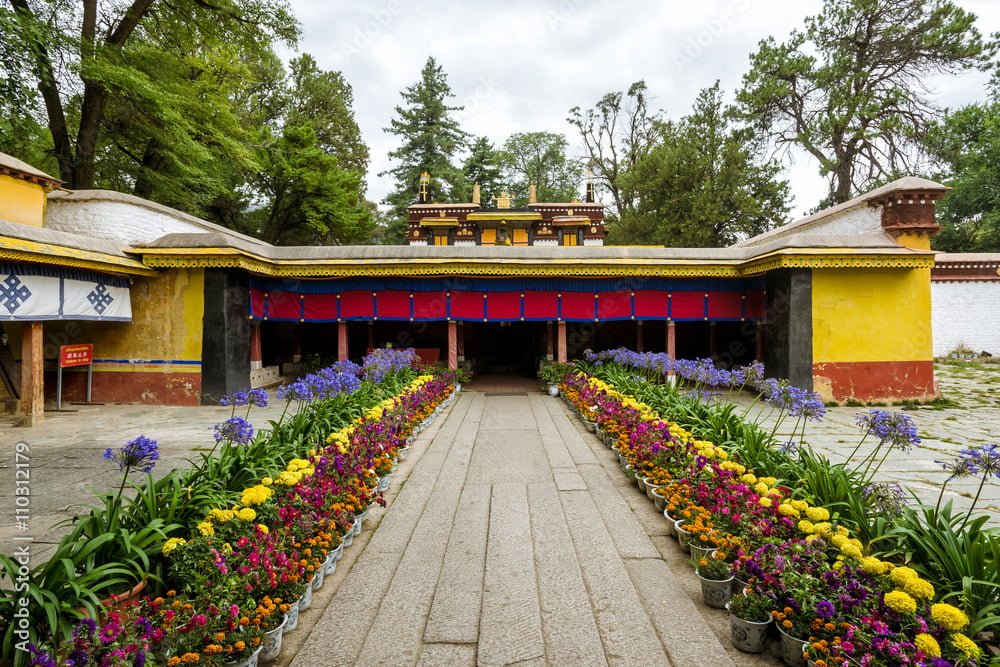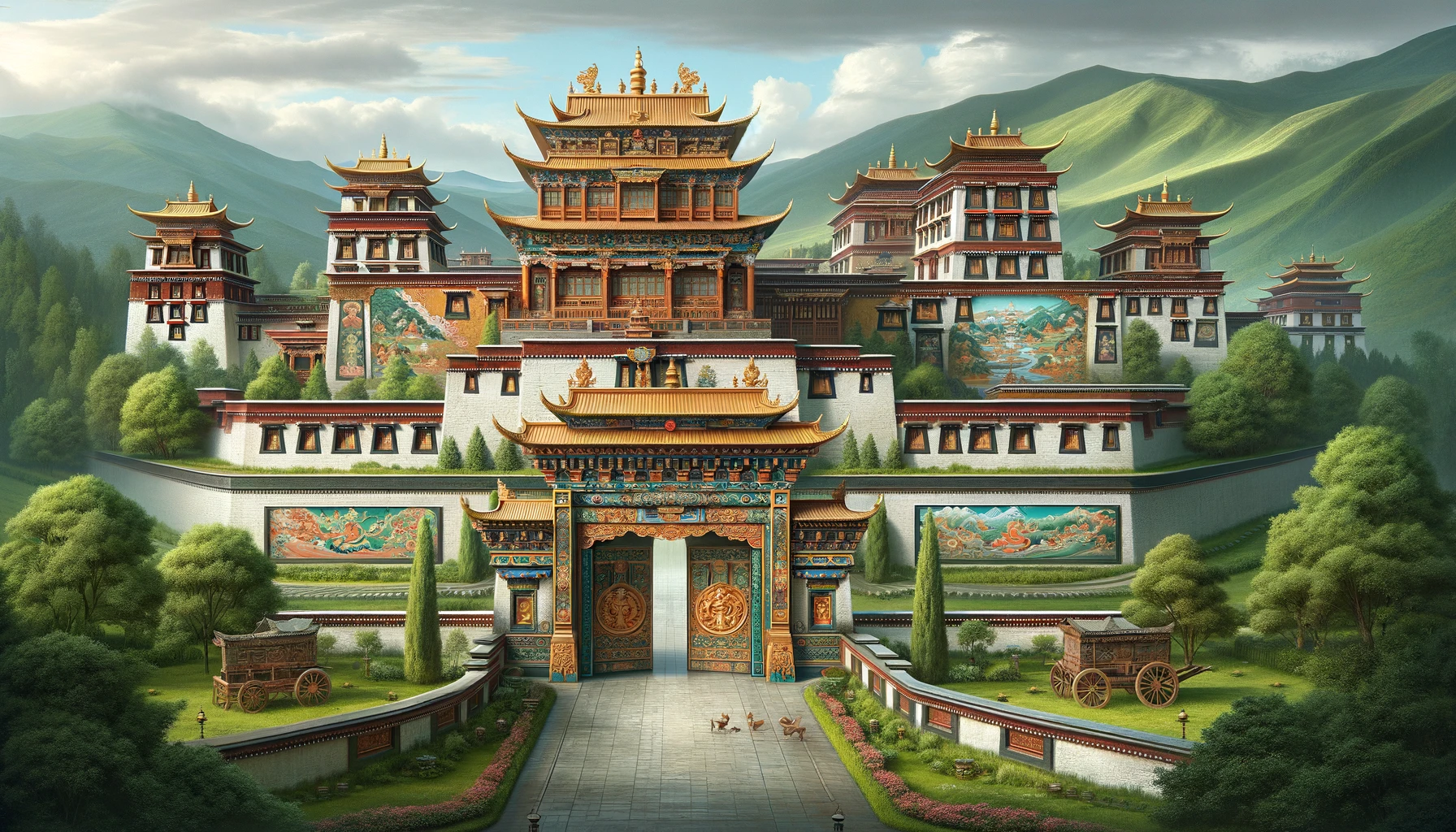Samzhubzê: The Heart of Tsang Tibetan Tradition
Discover Samzhubzê District, formerly known as Shigatse (Tibetan script: གཞིས་ཀ་རྩེ་གྲོང་ཁྱེར།), a region steeped in history and culture. In Tibetan, “Samzhubzê” (Samdup Tse) translates to “wish-fulfilling,” a name that echoes the district’s spiritual significance. It is nestled in the southern part of Tibet, at the northern foot of the Himalayas. Samzhubzê is a tapestry of natural beauty and historical importance. The district spans the Yarlung Tsangpo River, meandering 145 kilometres and merging with the Nyangchu River.
Geographical Coordinates and Boundaries
Samzhubzê lies between latitudes 28.9°N to 29.2°N and longitudes 88.4°E to 89.6°E. It shares borders with Renbu, Bailang, Gyantse, Sakya, and Xaitongmoin counties, and connects northward to Namling. The district’s historical names include “Shigatse,” “Shitse,” and “Shiga Samdup Tse,” among others, reflecting its rich linguistic heritage.

Samzhubzê: A Political and Cultural Epicenter
Historically, Samzhubzê has been the seat of the Panchen Lamas and the political, economic, religious, and cultural centre of Western Tibet. Under the rule of the Phagmodrupa Dynasty in the 14th century and later the Rinbung Kingdom. The area was known as “གཞིས་ཀ བསམ་འགྲུབ་རྩེ་” Before Tibet’s liberation. It was the administrative centre of the Shigatse Prefecture (Shigatse Dzong).
The Evolution of Samzhubzê
In May 1959, Shigatse County was established, later becoming Shigatse City at the county level in December 1986. On June 26, 2014, the State Council approved the reformation of Shigatse Prefecture into a prefecture-level city. It renamed the original Shigatse City as Samzhubzê District (བསམ་འགྲུབ་རྩེ་ཆུས།). As of 2022, the district governs 4 subdistricts and 10 townships, covering an area of 3,664.72 square kilometres, with a population of 158,290 residents. In February 2019, Samzhubzê proudly exited the list of impoverished counties.
Samzhubzê: A City of History and Mystery
As Tibet’s second-largest city and a nationally recognized historical and cultural city, Samzhubzê, with its 600-year-old legacy, always carries an air of mystery. This historic district is a testament to Tibet’s vibrant cultural and spiritual life, inviting visitors to explore its rich heritage and scenic landscapes.
Samzhubzê District: A Harmony of Terrain and Climate
Diverse Terrain and Climate of Samzhubzê
Samzhubzê District, located in the mid-section of the Himalayas and between the Gangdise and Nyenchen Tanglha mountain ranges, features a diverse terrain. The south and north are elevated, encompassing the southern Tibetan Plateau and the Yarlung Tsangpo River Valley. This complex geography is composed of high mountains, wide valleys, and lake basins, with an average altitude above 4,000 meters, ranging from a minimum of 3,800 meters to a maximum of 6,646 meters. Six peaks are exceeding 5,500 meters in height.
The climate in Samzhubzê falls under the temperate plateau semi-arid monsoon category. Distinct dry and wet seasons are observed, with mild and rainy summers and cold, windy winters. Annually, the district enjoys 3,248 hours of sunshine, receives an average of 420 mm of rainfall, experiences a frost-free period of 118 days, and has an average temperature of 6.3°C. Natural disasters include droughts, frosts, hailstorms, floods, and windstorms.
Samzhubzê’s Renowned Agricultural and Livestock Products
Samzhubzê is a key area in the comprehensive development project of Tibet’s “One River, Two Streams”, primarily focusing on agriculture and animal husbandry. As one of Tibet’s eleven major grain-producing bases, it has 180,000 acres of cultivated land, growing crops like highland barley, wheat, buckwheat, peas, and rapeseed. The district’s 600,000 acres of grasslands primarily support the rearing of yaks, buffalo, sheep, goats, and horses. With a forest area of 256,000 acres and an annual timber yield of 335 cubic meters, Samzhubzê is also significant in forestry.
Key special products include gold and silver wares, silver inlaid wooden bowls, tea trays, Tibetan carpets, mats, iron stoves, Tibetan cabinets, silver carvings, and Sharba clothing. The district’s tea trays and racks have won a national second-class award from the Ministry of Light Industry!
Specialty Product Insights: Gold and Silver Wares
Samzhubzê’s gold and silver crafts are renowned for their exquisite workmanship. Often featuring designs of dragons, tigers, lions, elephants, phoenixes, peacocks, and various auspicious symbols. These products, rich in artistic value, include gold and silver plates, bowls, pots, and an array of copper items like pots, pans, spoons, bells, and lamps. Many of the gold, silver, and copper ornaments used in temple constructions, such as golden tops, treasure wheels, golden banners, and ornamental creatures, achieve their dazzling effect through gold plating. Furthermore, the “Tashi Gyica Colored Gold, Silver, and Copper Crafting Technique” of Shigatse was inscribed in 2011 on the national list of Intangible Cultural Heritage.
Travel and Transportation in Samzhubzê, Shigatse: Gateway to the Himalayas
Samzhubzê: A Hub of Road Connectivity in Tibet
Samzhubzê District in Shigatse stands as a central point in Tibet’s road network, with highways extending in all directions. Key routes include National Highway 318, the China-Nepal Highway, the Shigatse-Yadong Highway, and the Lhasa-Purang Highway, connecting the district to various regions.
Accessible within a day from Nepal, Samzhubzê provides direct routes to Everest Base Camp towards the south, Nagqu to the north, Lhasa and Shannan to the east, and Ngari to the west. These highways link Samzhubzê to 17 counties in Shigatse, forming a comprehensive road network. Additionally, the district is served by the Lhasa-Shigatse Railway and Peace Airport, enhancing its accessibility.
Travel Tips for Samzhubzê
1. Transportation Options:
Lhasa to Samzhubzê: The northern route (new road) covers 228 kilometres with buses and minibuses available; the southern route (old road) spans 328 kilometres, offering scenic views of Yamdrok Lake. This route can be traversed by a hired car or self-drive.
Regular bus services connect Samzhubzê to Gyantse, Dingri, Gangba, Angren, Dingjie, Kangma, Sakya, Lazi, Saga, Zhangmu, and Yadong. Charter services are common for destinations like Ngari. For trips to Yamdrok Lake, Everest, and Zhangmu, a 5-6 day journey is typical, with charter costs around 4,000-5,000 yuan (for reference).
2. Dining and Accommodation:
Food: Shigatse offers a variety of dining options concentrated around Jiefang North Road and Qomolangma Road. Here featuring Sichuan cuisine, Tibetan tea houses, fast food, and Tibetan and Nepalese meals at moderate prices. Local specialities include Tsampa, butter tea, grilled meats, sausage, marinated yak tongue, yoghurt, dried meats, Shapu Qing (meat jelly), and barley wine. Night markets offer affordable delicacies like hot pots and barbecues.
Accommodation: Numerous hotels of varying grades are available, with the most popular period being the Buddha Exhibition Festival. Tibetan-style guesthouses offer an affordable and unique experience, particularly popular among backpackers.
3. Air Travel:
The Chengdu to Shigatse air route, operational since July 2011, takes 2 hours and 15 minutes. Tibet Airlines typically flies on Tuesdays, Thursdays, and Saturdays, with schedules varying by season. Shigatse Peace Airport is the fifth-highest airport at an elevation of 3,783 meters and 43 km from the city centre.
4. The Lhasa-Shigatse Railway:
This extension of the Qinghai-Tibet Railway, a single-line national railway with a speed of 120 km/h, includes 26 tunnels and 96 bridges over its 253 km length. Construction began on September 26, 2010. The railway, operational since August 15, 2014, connects Lhasa to Shigatse via Duilongdeqing, Qushui, Nyemo, and Renbu, with the first passenger train departing from Lhasa and reaching Shigatse in 2 hours and 59 minutes.
Exploring Samzhubzê: The Gateway to Tibet’s Majestic Landscapes and Cultural Festivals
Transportation and Accessibility in Samzhubzê
Samzhubzê District is a key transportation hub in Tibet, with a network of roads connecting it to various destinations. Major highways like the National Highway 318, China-Nepal Highway, and others intersect here, providing easy access to Everest, Lhasa, Shannan, and Ngari. These roads also connect Samzhubzê to 17 other counties in the region, forming an extensive travel network. The Lhasa-Shigatse Railway and Shigatse Peace Airport further enhance the district’s accessibility.
Travel Routes and Recommendations
1. Premium Travel Routes:
- Everest Journey: A 10-day trip covering Samzhubzê, Sakya, Lazi, Dingri (Everest), Gyirong, and Nyalam (Zhangmu Town), featuring landmarks like Tashilhunpo Monastery, Sakya Monastery, Mount Everest, and Zhangmu Port.
- Yarlung Tsangpo River Source Exploration: An 8-day journey from Samzhubzê through Renbu, Namling, Lazi, Angren, Saga, and Zhongba, ideal for self-drive tours and exploring the mystique of the river’s source.
- Red River Valley Tour: A 5-day route from Samzhubzê to Jiangzi, Kangma, and Yadong, offering picturesque views and a visit to the nearest glacier from the highway, the Karola Glacier.
2. Suggested Travel Itineraries:
- 3-Day Everest Tour: Day 1: Jiangzi (Palkhor Monastery, Zongshan Anti-British Site); Day 2: Samzhubzê (Tashilhunpo Monastery, Panchen Lama’s New Palace); Day 3: Samzhubzê to Dingri and Everest Base Camp.
- 7-Day Lhasa-Gyangtse-Shigatse Tour: Includes visits to Potala Palace, Jokhang Temple, Barkhor Street in Lhasa, Yamdrok Lake, Karola Glacier, and cultural events in Gyangtss.
3. Festivals and Celebrations:
- Celebrations include Tibetan New Year in the 11th month of the Tibetan calendar, the Buddha Exhibition Festival, the Everest Cultural Tourism Festival, the Zekmo Chenpo (God Dance) Festival, the Lhakang (Picnic) Festival, the Bathing Festival, and the Ongkor (Bumper Harvest) Festival.
4. Scenic Viewpoints and Cultural Attractions:
- The observation deck on Sanggar Mountain, east of Samzhubzê, offers a panoramic view of Shigatse.
- Shigatse Pedestrian Street, built in 2003 and located west of Qingdao Road in Shigatse. It is a bustling commercial and cultural area, showcasing the architectural style of Shigatse residences.





















